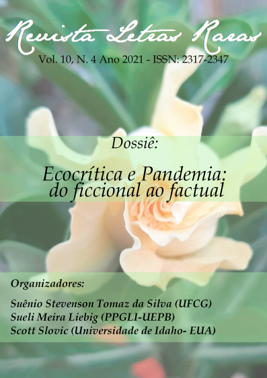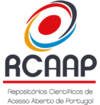Neither here nor there - Where can COVID-19 pandemic lead, since near / far is nowhere?
DOI:
https://doi.org/10.5281/zenodo.8404650Palavras-chave:
Humanity, Nature, CrisisResumo
The article addresses the crisis, related to the COVID-19 pandemic, pointing to it as a result of the convergence of several other crises, including the social, environmental, political and economic. The text discusses the need for human re-appropriation of different ways of life, indicating as a pressing need the production of other forms of knowledge and understanding, according to Leff (2004), aiming at the dissemination, above all, of the valorization of other forms of life in the planet. In proposing this type of "dialogical table", for the production of environmental meanings in the context of the relationships between human beings and nature, it guides towards the observation of aspects inherent to the constitution of the human being, such as emotions and spiritualities that operate as promoters and inducers of thoughts and behaviors in the production of realities and daily life. The article suggests based on the studies of Medina (2021) and Lavorato (2020), the creation of a talk table for the "listening" of beings, whose seats should be guaranteed, in the name of the maintenance of all forms of life in the Planet. It concludes by pointing out
the human as a mediator and weaver of the network of production, provider and sponsor emphasizing the value of the knowledge of nature such as the protein threads produced by spiders, the social organization of ants and the flower of the mandacaru in hinterland indicating the arrival of rain in the sertão.
Downloads
Referências
ARORA, S.; BHAUKHANDI, K. D.; MISHRA, P. K. Coronavirus lockdown helped the environment to bounce back. Science of the Total Environment., [s. l.], n. 742, p. 140573, 2020.
BARROSO, R. de F. et al. Um estudo comparativo de alertas positivos e negativos do meio ambiente em tempos de pandemia. Revista Agrária Acadêmica, [s. l.], v. 3, n. 6, nov./dez. 2020. Disponível em: https://www.researchgate.net/publication/347735958_Um_estudo_comparativo_de_alertas_positivos_e_negativos_do_meio_ambiente_em_tempos_de_pandemia. Acesso em: 22 jun. 2021.
CASTRO, F. de; LOPES, G. R.; BRONDIZIO, E. S. The Brazilian Amazon in times of COVID-19: from crisis to transformation? Ambiente e Sociedade, São Paulo, v. 23, 2020.
GARRARD, G. Ecocrítica. Tradução de Vera Ribeiro. Brasília: Editora da UnB, 2006.
GUIMARÃES, M. A dimensão ambiental na educação. Campinas: Papirus, 1995.
LATOUR, B. Imaginando gestos que barrem o retorno ao consumismo e à produção insustentável pré-pandemia. Tradução de Débora Danowski. Clima Info, 3 abr. 2020. Disponível em: https://climainfo.org.br/2020/04/02/barrar-producao-insustentavel-e-onsumismo/. Acesso em: 22 jun. 2020.
LAVORATO, M. L. de A. A importância da consciência ambiental para o Brasil e para o mundo. Ambiente Brasil, 2020. Disponível em: https://ambientes.ambientebrasil.com.br/gestao/artigos/a_importancia_da_consciencia_ambiental_para_o_brasil_e_para_o_mundo.html. Acesso em: 22 jun. 2021.
LEFF, E. Racionalidad ambiental. La reapropiación social de la naturaleza. México: Siglo XXI Editores, 2004.
LEFF, E. A água como bem comum ou bem privado. In: LEFF, E. Discursos sustentáveis. São Paulo: Cortez, 2010, p. 109-118.
MASCHIO, J. J. Os animais, direitos deles e ética para com eles. Jus Navigandi, ago. 2005.
Disponível em: https://jus.com.br/artigos/7142/os-animais. Acesso em: 18 mar. 2021.
MEDINA, A. M. C. Relational paradigm of life new meanings and values for life when viruses threaten. Revista da Fundarte, Montenegro, ano 21, n. 44, p. 1-10, jan./mar. 2021. Disponível em: http://seer.fundarte.rs.gov.br/index.php/RevistadaFundarte/article/viewFile/862/pdf_164. Acesso em: 28 jul. 2021.
MORATELLI, R.; CALISHER, C. H. Bats and zoonotic viruses: Can we confidently link bats with emerging deadly viruses? Memórias do Instituto Oswaldo Cruz, Rio de Janeiro, v. 110, n. 1, p. 1-22, 2015.
PEREIRA, L. M. et al. Developing multiscale and integrative nature-people scenarios using the Nature Futures Framework. People and Nature, London, v. 2, n. 4, p. 1172-1195, 2020. Disponível em: https://doi.org/10.1002/pan3.10146. Acesso em: 22 jun. 2021.
SETTELE, J. et al. COVID-19 stimulus measures must save lives, protect livelihoods, and safeguard nature to reduce the risk of future pandemics. Intergovernmental Science-Policy Platform on Biodiversity and Ecosystem Services (IPBES), Bonn, Germany, 2020. Disponível em: https://ipbes.net/covid19stimulus. Acesso em: 10 mar. 2021.
Downloads
Publicado
Como Citar
Edição
Seção
Licença
Copyright (c) 2023 Revista Letras Raras

Este trabalho está licenciado sob uma licença Creative Commons Attribution-NonCommercial 4.0 International License.







